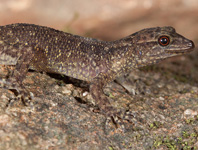Abstract
Procheiridium judsoni n. gen. et n. sp. is described from Burmese cretaceous amber. This species represents the earliest record of the pseudoscorpion subfamily Pycnocheiridiinae and the first fossil taxon of the subfamily to be recorded. The phylogenetic position of the new genus in the superfamily Cheiridioidea is discussed.
References
Beier, M. (1964) Weiteres zur Kenntnis der Pseudoskorpioniden-Fauna des südlichen Afrika. Annals of the Natal Museum, 16, 30–90.
Benavides, L.R., Cosgrove, J.G., Harvey, M.S. & Giribet, G. (2019) Phylogenomic interrogation resolves the backbone of the Pseudoscorpiones Tree of Life. Molecular Phylogenetics and Evolution, 139, 106509.
https://doi.org/10.1016/j.ympev.2019.05.023
Chamberlin, J.C. (1931) The arachnid order Chelonethida. Stanford University Publications, University Series, Biological Sciences, 7 (1), 1–284.
Grimaldi, D.A., Engel, M.S. & Nascimbene, P.C. (2002) Fossiliferous Cretaceous amber from Myanmar (Burma): its rediscovery, biotic diversity, and paleontological significance. American Museum Novitates, 3361, 1–7.
https://doi.org/10.1206/0003-0082(2002)361<0001:fcafmb>2.0.co;2
Harms, D. & Dunlop, J. (2017) The fossil history of pseudoscorpions (Arachnida: Pseudoscorpiones). Fossil Record, 20, 215–238.
https://doi.org/10.5194/fr-20-215-2017
Harvey, M.S. (1992) The phylogeny and classification of the Pseudoscorpionida (Chelicerata: Arachnida). Invertebrate Taxonomy, 6, 1373–1435.
https://doi.org/10.1071/IT9921373
Harvey, M.S. (2013) Pseudoscorpions of the World. Version 3.0. Western Australian Museum, Perth. Available from: http://www.museum.wa.gov.au/catalogues/pseudoscorpions (accessed 28 June 2019)
Harvey, M.S. & Edward, K.L. (2007) A review of the pseudoscorpion genus Ideoblothrus (Pseudoscorpiones, Syarinidae) from western and northern Australia. Journal of Natural History, 41, 445–472.
https://doi.org/10.1080/00222930701219123
Harvey, M.S. & Volschenk, E.S. (2007) A review of some Australasian Chernetidae: Sundochernes, Troglochernes and a new genus (Pseudoscorpiones). Journal of Arachnology, 35, 238–277.
https://doi.org/10.1636/SH06-41.1
Hoff, C.C. (1964) A new pseudochiridiid pseudoscorpion from Florida. Transactions of the American microscopical Society, 83, 89–92.
https://doi.org/10.2307/3224844
Judson, M.L.I. (1992) African Chelonethi. Studies on the systematics, biogeography and natural history of African pseudoscorpions (Arachnida). Ph.D. thesis, University of Leeds, Leeds, West Yorkshire, v + 183 pp., figs. 2.1–6.5.
Judson, M.L.I. (1997) Catalogue of the pseudoscorpion types (Arachnida: Chelonethi) in the Natural History Museum, London. Occasional Papers on systematic Entomology, 11, 1–54.
Judson, M.L.I. (2000) Electrobisium acutum Cockerell, a cheiridiid pseudoscorpion from Burmese amber, with remarks on the validity of the Cheiridioidea (Arachnida, Chelonethi). Bulletin of the Natural History Museum London, Geology, 56 (1), 79–83.
Judson, M.L.I. (2007) A new and endangered species of the pseudoscorpion genus Lagynochthonius from a cave in Vietnam, with notes on chelal morphology and the composition of the Tyrannochthoniini (Arachnida, Chelonethi, Chthoniidae). Zootaxa, 1627, 53–68.
https://doi.org/10.11646/zootaxa.1627.1.4
Judson, M.L.I. (2011) Cheliferoid pseudoscorpions (Arachnida, Chelonethi) from the Lower Cretaceous of France. Geodiversitas, 31, 6171.
https://doi.org/10.5252/g2009n1a6
Mahnert, V. & Schmidl, J. (2011) First record of the subfamily Pycnocheiridiinae from South America, with the description of Leptocheiridium pfeiferae gen. n., sp n. (Arachnida: Pseudoscorpiones: Cheiridiidae). Revue Suisse de Zoologie, 118 (4), 659–666.
https://doi.org/10.5962/bhl.part.117821
Rasnitsyn, A.P., Bashkuev, A.S., Kopylov, D.S., Lukashevich, E.D., Ponomarenko, A.G., Popov, Y.A., Rasnitsyn, D.A., Ryzhkova, O.V., Sidorchuk, E.A., Sukatsheva, I.D. & Vorontsov, D.D. (2016) Sequence and scale of changes in the terrestrial biota during the Cretaceous (based on materials from fossil resins). Cretaceous Research, 61, 234–255.
https://doi.org/10.1016/j.cretres.2015.12.025
Ross, A. (2019) Burmese (Myanmar) amber checklist and bibliography 2018. Palaeoentomology, 2 (1), 1–22.
https://doi.org/10.11646/palaeoentomology.2.1.5
Selden, P. & Ren, D. (2017) A review of Burmese amber arachnids. Journal of Arachnology, 45, 324–343.
https://doi.org/10.1636/joa-s-17-029
Shi, G., Grimaldi, D.A., Harlow, G.E., Wang, J., Wang, J., Yang, M., Lei, W., Li, Q. & Li, X. (2012) Age constraint on Burmese amber based on UePb dating of zircons. Cretaceous Research, 37, 155–163.
https://doi.org/10.1016/j.cretres.2012.03.014
Vitali-di Castri, V. (1966) Observaciones biogeográficas y filogenéticas sobre la familia Cheiridiidae (Pseudoscorpionida). In: Progresos en Biologia del Suelo. UNESCO, Montevideo, pp. 379–386.


